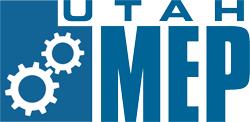ABOUT LIBERTY SAFE AND SECURITY PRODUCTS:
Liberty Safe began building safes from a rental storage unit in 1988 and has grown over the last 24 years to become the top gun safe manufacturer in America for homes. Today Liberty produces as many as 350 safes a day on a 23-acre, 205,000 sq. ft. production and distribution facility located in Payson, Utah. The company recently invested in a $12 million dollar high-end production line to bring the production of all entry-level safes back to the United States. Last year alone, Liberty built and sold more than 115,000 safes, doubling their nearest competitor and has sold a total of more than 1.4 million safes.
Situation:
Liberty has always prided itself on producing the cleanest safes in America. Their employees and clients appreciate the fact that they have eliminated nearly all of the environmental hazards that normally occur in the manufacturing processes. They’ve invested in this type of technology to produce a higher quality product while maintaining a cleaner and safer environment. It was in the interest of continuing their pursuit of environmentally friendly manufacturing processes and products that not only protect valuables but also protect natural resources that brought Liberty Safe to the Utah Manufacturing Extension Partnership (MEP Utah), a NIST MEP affiliate, and its Sustainable Business Practices training.
Solution:
Two of Liberty’s primary stakeholders registered for the sustainability course offered by MEP Utah, including Richard O’Neal, Director of Engineering and Brian Walker, Waste Management Supervisor. There are five modules that form the acronym WASTE: Water, Air, Solid Waste, Toxic Chemicals, and Energy. Liberty Safe found through using the tools presented, that they had several areas that they could benefit.
One area of focus was their solid waste stream. The process of fabricating safes uses a lot of raw materials and it inherently causes a lot of scrap since everything is cut out to exact patterns. Liberty Safe was able to focus on recycling their waste stream. They were able to find a manufacturer to purchase the scrap metal from the leftover metal and also find a company that grinds down the sheetrock to be used as an agricultural additive. Finally, they located a source to buy much of their leftover fabric that lines the shelves. In addition, their new production line has been designed with green in mind. The paint system uses nearly all the powder with very little waste. The wash system uses an economizer and is insulated to reduce heat loss and saves energy. The coil drops are being cut to usable sizes, and this saves on needed raw materials.
Still another project was the garbage compaction project. Liberty decided to build their own crusher. Then they use this compaction method every day to increase the material that can be hauled away. They have continued recycling efforts, tracking their waste, looking at machinery that is more energy efficient, and educating employees on the value of sustainability. Their new Green Specialist at Liberty has now put up a bulletin board outlining the recycling program. The purpose of this is to further educate their employees at large about sustainability. They post the garbage tonage and cost each month as well as graphs that show year to date on cost, weights, hauls, and haul average.
Results:
- $180,000 in annual savings from sustainability efforts
- 15% reduction in solid waste and increased recycling
- Green Specialist passed an SME exam and became Green certified
- More than doubled the company’s garbage compaction
- Garbage compaction project has saved the company nearly $100,000
- Labor savings of 70%



